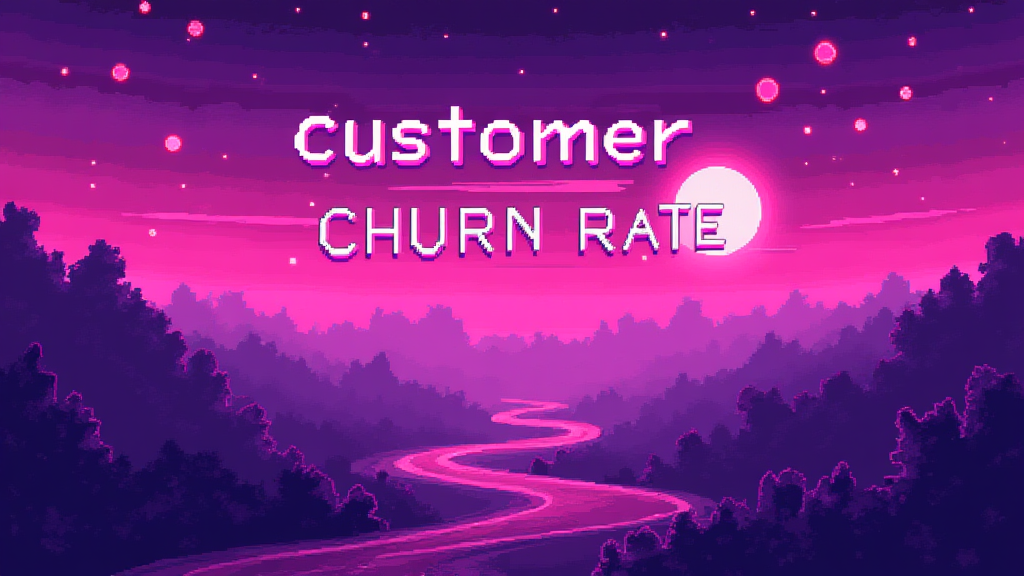Customer Churn Rate: Key Metric for Retention

Published on: October 01, 2024
Customer Churn Rate is a critical metric that measures the percentage of customers who stop doing business with a company over a specific period. This essential indicator helps businesses understand customer retention and loyalty, providing valuable insights into the health of their customer base.
Understanding Customer Churn Rate 📊
Customer Churn Rate is calculated by dividing the number of customers lost during a given period by the total number of customers at the beginning of that period. The formula is:
Customer Churn Rate = (Customers Lost / Total Customers at Start) x 100
For example, if a company starts with 1,000 customers and loses 50 over a month, the churn rate would be:
(50 / 1,000) x 100 = 5%
Why Customer Churn Rate Matters 🎯
Understanding and managing Customer Churn Rate is crucial for several reasons:
- Revenue Impact: Retaining existing customers is often more cost-effective than acquiring new ones.
- Business Health Indicator: A high churn rate may signal underlying problems with product quality, customer service, or competitive pressures.
- Growth Predictor: Lower churn rates typically lead to higher customer lifetime value and sustainable growth.
- Resource Allocation: Helps businesses decide where to focus retention efforts.
Factors Influencing Customer Churn Rate 🔍
Several factors can impact Customer Churn Rate:
- Product Quality: Poor product performance or reliability can drive customers away.
- Customer Service: Inadequate support or unresolved issues often lead to churn.
- Pricing: Uncompetitive pricing or sudden price increases may cause customers to leave.
- Competitor Actions: Attractive offers from competitors can lure customers away.
- Customer Onboarding: A smooth onboarding process can reduce early churn.
- Market Changes: Shifts in technology or consumer preferences can impact churn rates.
Strategies to Reduce Customer Churn Rate 💡
Implementing effective strategies can help businesses reduce their Customer Churn Rate:
- Improve Customer Experience: Enhance product quality and customer service.
- Personalization: Tailor offerings and communications to individual customer needs.
- Proactive Engagement: Reach out to at-risk customers before they churn.
- Loyalty Programs: Reward long-term customers to encourage retention.
- Regular Feedback Collection: Use surveys and feedback to address issues promptly.
- Competitive Analysis: Stay informed about competitor offerings and market trends.
Customer Churn Rate Benchmarks 📈
While ideal churn rates vary by industry, here's a general guideline:
| Industry | Average Annual Churn Rate |
|---|---|
| SaaS | 5-7% |
| Retail | 20-25% |
| Telecom | 15-25% |
| Financial Services | 10-15% |
Common Misconceptions about Customer Churn Rate ⚠️
Avoid these common misunderstandings:
- All Churn is Bad: Some churn is natural and can even be beneficial if unprofitable customers leave.
- Churn Rate is the Only Important Metric: While crucial, it should be considered alongside other metrics like Customer Acquisition Cost and Lifetime Value.
- Lower Prices Always Reduce Churn: Price isn't always the primary factor in customer decisions.
Implementing Customer Churn Rate Analysis in Your Business 🚀
To effectively use Customer Churn Rate in your organization, consider these questions:
- How does our churn rate compare to industry benchmarks?
- What are the primary reasons for customer churn in our business?
- How can we improve our data collection to better understand churn patterns?
- What strategies can we implement to reduce churn in the short and long term?
- How can we segment our customers to identify those at highest risk of churning?
By regularly analyzing and acting on your Customer Churn Rate, you can improve customer retention, boost loyalty, and drive sustainable growth for your business. For more insights, check out our articles on customer churn and churn rate metrics.

















